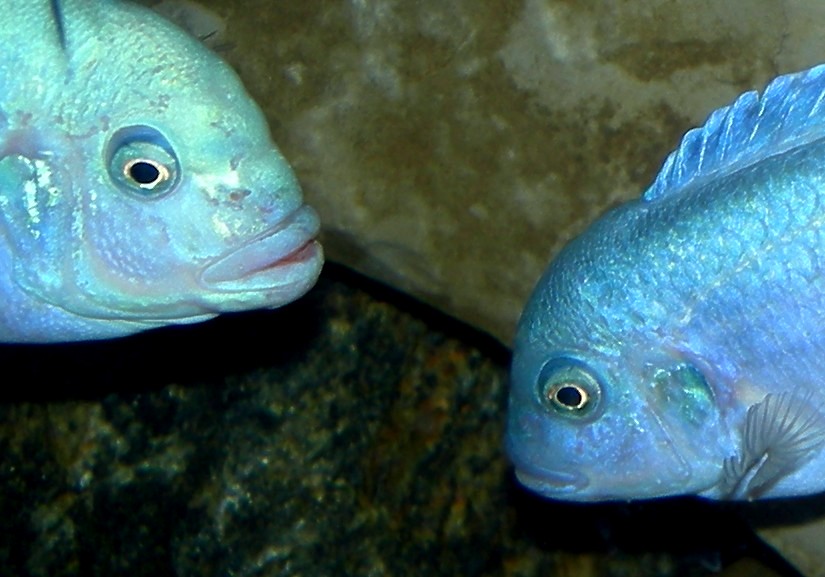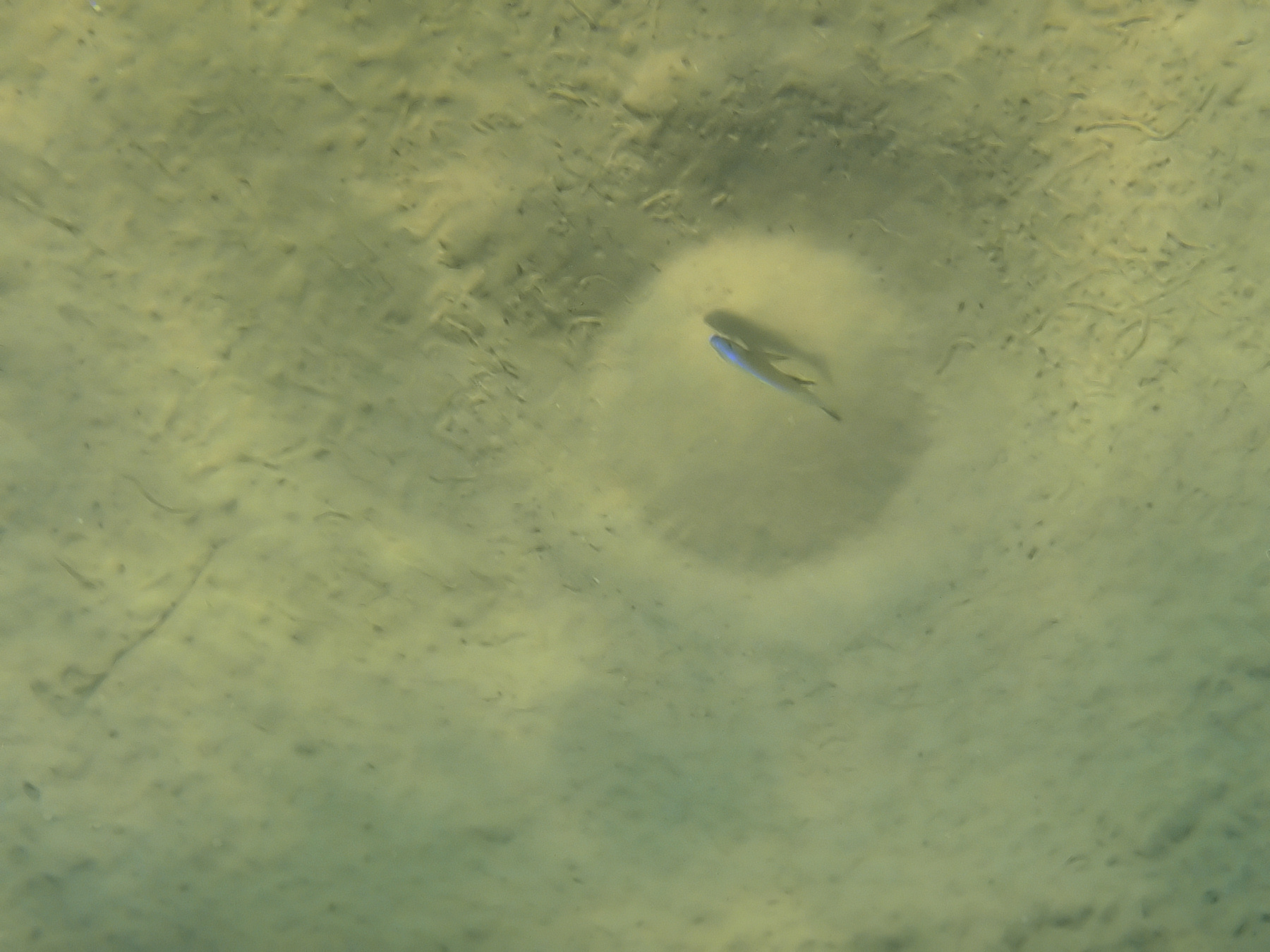|
Maylandia
''Maylandia'' or ''Metriaclima'' is a genus of haplochromine cichlids endemism, endemic to Lake Malawi in East Africa. They belong to the mbuna (rock-dwelling) haplochromines. All species in this genus are relatively small fishes, less than in length. Like most Lake Malawi cichlids, exhibit brood care via maternal mouthbrooding. Numerous members of the genus are traded as aquarium fish. They are attractive because they are brightly colored and often very sexually dimorphic; like other cichlids they are not suited for beginners and for most companion tanks. Name The name ''Maylandia'', honours the cichlid enthusiast and author about aquaria Hans Joachim Mayland, who died in 2004, was proposed as a subgenus of ''Pseudotropheus'' in 1984, naming the long-known but undescribed "Ice Blue Zebra" as the type species. In 1997 Stauffer ''et al''. described the genus ''Metriaclima'', dismissing the pre-existing ''Maylandia'' on the assumption that it lacked a type species and a diagnosi ... [...More Info...] [...Related Items...] OR: [Wikipedia] [Google] [Baidu] |
Metriaclima Lombardoi Male
''Maylandia'' or ''Metriaclima'' is a genus of haplochromine cichlids endemic to Lake Malawi in East Africa. They belong to the mbuna (rock-dwelling) haplochromines. All species in this genus are relatively small fishes, less than in length. Like most Lake Malawi cichlids, exhibit brood care via maternal mouthbrooding. Numerous members of the genus are traded as aquarium fish. They are attractive because they are brightly colored and often very sexually dimorphic; like other cichlids they are not suited for beginners and for most companion tanks. Name The name ''Maylandia'', honours the cichlid enthusiast and author about aquaria Hans Joachim Mayland, who died in 2004, was proposed as a subgenus of ''Pseudotropheus'' in 1984, naming the long-known but undescribed " Ice Blue Zebra" as the type species. In 1997 Stauffer ''et al''. described the genus ''Metriaclima'', dismissing the pre-existing ''Maylandia'' on the assumption that it lacked a type species and a diagnosis. Two ye ... [...More Info...] [...Related Items...] OR: [Wikipedia] [Google] [Baidu] |
Kennyi Mbuna
''Maylandia lombardoi'', is a long freshwater fish from the family Cichlidae. This species is popular in the aquarium hobby where it is sold under a variety of common names including: lombardoi mbuna, kenyi mbuna or kennyi mbuna or kenyi cichlid. This species is sometimes seen in the genus ''Metriaclima'' owing to a dispute in which a minority of cichlid researchers do not consider ''Maylandia'' valid (see ''Maylandia'' for discussion. The specific name honours the exotic fish dealer John Lombardo. Distribution and habitat It is endemic to the rocky shores of Mbenji Island, Lake Malawi in east Africa. The species is highly sexually dimorphic, females and juvenile males are pale white-blue with several blue-black vertical bands extending into the dorsal fin. Adult males turn bright yellow with faint brown bars crossing the body; fins are plain yellow with egg spots on the anal fin. In the aquarium Kenyi cichlids are sold for the aquarium hobby. Reproduction Like most mbuna cic ... [...More Info...] [...Related Items...] OR: [Wikipedia] [Google] [Baidu] |
Mbuna
Mbuna (pronounced Mmm-boo - nah ) is the common name for a large group of African cichlids from Lake Malawi, and are members of the haplochromine family. The name ''mbuna'' means "rockfish" in the language of the Tonga people of Malawi.Loiselle Paul V. (1988) ''A Fishkeepers Guide to African Cichlids.'' p 97. Salamander Books, London & New York, . As the name implies, most mbuna are cichlids that live among the piles of rocks and along the rocky shores of Lake Malawi, as opposed to the utaka, cichlids that live in the open water or on sandy shores or soft substrates. Some species of mbuna are highly sexually dimorphic, although many are not. Among biologists, almost all of the cichlid species of Lake Malawi, including mbuna and non mbuna such as the utaka, are believed to have descended from one or a very few species that became isolated in the lake. With rising water levels, new habitats could be colonized and the many isolated rocky outcrops allowed new mbuna species to form.G ... [...More Info...] [...Related Items...] OR: [Wikipedia] [Google] [Baidu] |
Cichlid
Cichlids are fish from the family Cichlidae in the order Cichliformes. Cichlids were traditionally classed in a suborder, the Labroidei, along with the wrasses ( Labridae), in the order Perciformes, but molecular studies have contradicted this grouping. The closest living relative of cichlids is probably the convict blenny, and both families are classified in the 5th edition of ''Fishes of the World'' as the two families in the Cichliformes, part of the subseries Ovalentaria. This family is both large and diverse. At least 1,650 species have been scientifically described, making it one of the largest vertebrate families. New species are discovered annually, and many species remain undescribed. The actual number of species is therefore unknown, with estimates varying between 2,000 and 3,000. Many cichlids, particularly tilapia, are important food fishes, while others, such as the ''Cichla'' species, are valued game fish. The family also includes many popular freshwater aquariu ... [...More Info...] [...Related Items...] OR: [Wikipedia] [Google] [Baidu] |
Ice Blue Zebra
William's mbuna (''Maylandia greshakei''), also known as ice blue zebra mbuna or ice blue zebra or the Pseudotropheus ice blue among the aquarium enthusiasts, is a species of cichlid fish endemic to Lake Malawi where it is only found at Makokola in the southeastern arm of the lake. This species can reach a length of TL. It can also be found in the aquarium trade. The specific name honours the German German(s) may refer to: * Germany (of or related to) ** Germania (historical use) * Germans, citizens of Germany, people of German ancestry, or native speakers of the German language ** For citizens of Germany, see also German nationality law **Ge ... ornamental fish importer Alfons Greshake. References Fish of Malawi William's mbuna Fish described in 1984 Taxonomy articles created by Polbot Taxobox binomials not recognized by IUCN Fish of Lake Malawi {{Cichlidae-stub ... [...More Info...] [...Related Items...] OR: [Wikipedia] [Google] [Baidu] |
Maylandia Benetos
''Maylandia benetos'' is a species of cichlid endemic to Lake Malawi Lake Malawi, also known as Lake Nyasa in Tanzania and Lago Niassa in Mozambique, is an African Great Lake and the southernmost lake in the East African Rift system, located between Malawi, Mozambique and Tanzania. It is the fifth largest fr ... where it is only known from the southeastern part of the lake from Mazinzi Reef. References benetos Fish of Lake Malawi Fish of Malawi Fish described in 1997 Taxobox binomials not recognized by IUCN {{Cichlidae-stub ... [...More Info...] [...Related Items...] OR: [Wikipedia] [Google] [Baidu] |
Maylandia Barlowi
''Maylandia barlowi'' is a species of cichlid endemic to Lake Malawi where it is only known from the area around the Maleri Islands where it prefers areas with soft substrates. This species can reach a length of SL. It is also found in the aquarium trade. The specific name of this species honours the ichthyologist Ichthyology is the branch of zoology devoted to the study of fish, including bony fish ( Osteichthyes), cartilaginous fish (Chondrichthyes), and jawless fish (Agnatha). According to FishBase, 33,400 species of fish had been described as of Octobe ... George W. Barlow (1929-2007). References barlowi Fish of Lake Malawi Fish of Malawi Fish described in 1986 Taxobox binomials not recognized by IUCN Taxonomy articles created by Polbot {{Cichlidae-stub ... [...More Info...] [...Related Items...] OR: [Wikipedia] [Google] [Baidu] |
Maylandia Aurora
''Maylandia aurora'' is a species of cichlid endemic to Lake Malawi where it is only known from the southern half of Likoma Island where it prefers habitats with rocky substrates close to sand. Males of this species can reach a length of SL while females reach SL. It is also found in the aquarium trade. References aurora An aurora (plural: auroras or aurorae), also commonly known as the polar lights, is a natural light display in Earth's sky, predominantly seen in high-latitude regions (around the Arctic and Antarctic). Auroras display dynamic patterns of bri ... Fish described in 1976 Taxonomy articles created by Polbot Taxobox binomials not recognized by IUCN {{Cichlidae-stub ... [...More Info...] [...Related Items...] OR: [Wikipedia] [Google] [Baidu] |
Pseudotropheus
''Pseudotropheus'' is a genus of fishes in the family Cichlidae. These mbuna cichlids are endemic to Lake Malawi in Eastern Africa. Taxonomy Like some other large cichlid genera, such as ''Cichlasoma'', a number of related fishes have been recently reassigned to different genera such as ''Tropheops'' or ''Maylandia''. Some species of ''Melanochromis'' in turn have been moved into ''Pseudotropheus''. There are currently 25 recognized species in this genus: * ''Pseudotropheus ater'' Stauffer, 1988 * ''Pseudotropheus benetos'' ( Bowers & Stauffer, 1997) * ''Pseudotropheus brevis'' ( Trewavas, 1935) * ''Pseudotropheus crabro'' ( Ribbink & D. S. C. Lewis, 1982) * '' Pseudotropheus cyaneorhabdos'' ( Bowers & Stauffer, 1997) * ''Pseudotropheus cyaneus'' Stauffer, 1988 * ''Pseudotropheus demasoni'' Konings, 1994 * ''Pseudotropheus elegans'' Trewavas, 1935 Stauffer, J.R.Jr., Konings, A.F. & Ryan, T.M. (2016): Redescription of ''Pseudotropheus livingstonii'' and ''Pseudotropheus e ... [...More Info...] [...Related Items...] OR: [Wikipedia] [Google] [Baidu] |
Haplochromine
__NOTOC__ The haplochromine cichlids are a tribe of cichlids in subfamily Pseudocrenilabrinae called Haplochromini. This group includes the type genus (''Haplochromis'') plus a number of closely related genera such as '' Aulonocara'', '' Astatotilapia'', and '' Chilotilapia''. They are endemic to eastern, southern and northern Africa, except for ''Astatotilapia flaviijosephi'' in the ''Middle East''. A common name in a scientific context is East African cichlids – while they are not restricted to that region, they are the dominant Cichlidae there. This tribe was extensively studied by Ethelwynn Trewavas, who made major reviews in 1935 and 1989, at the beginning and at the end of her career in ichthyology. Even today, numerous new species are being described each year. The haplochromines were in older times treated as subfamily Haplochrominae, However, the great African radiation of pseudocrenilabrine cichlids is certainly not monophyletic without them, and thus they are t ... [...More Info...] [...Related Items...] OR: [Wikipedia] [Google] [Baidu] |
Wolfgang Förster
Wolfgang is a German male given name traditionally popular in Germany, Austria and Switzerland. The name is a combination of the Old High German words ''wolf'', meaning "wolf", and ''gang'', meaning "path", "journey", "travel". Besides the regular "wolf", the first element also occurs in Old High German as the combining form "-olf". The earliest reference of the name being used was in the 8th century. The name was also attested as "Vulfgang" in the Reichenauer Verbrüderungsbuch in the 9th century. The earliest recorded famous bearer of the name was a tenth-century Saint Wolfgang of Regensburg. Due to the lack of conflict with the pagan reference in the name with Catholicism, it is likely a much more ancient name whose meaning had already been lost by the tenth century. Grimm (''Teutonic Mythology'' p. 1093) interpreted the name as that of a hero in front of whom walks the "wolf of victory". A Latin gloss by Arnold of St Emmeram interprets the name as ''Lupambulus''.E. Förs ... [...More Info...] [...Related Items...] OR: [Wikipedia] [Google] [Baidu] |
FishBase
FishBase is a global species database of fish species (specifically finfish). It is the largest and most extensively accessed online database on adult finfish on the web.Marine Fellow: Rainer Froese ''Pew Environment Group''. Over time it has "evolved into a dynamic and versatile ecological tool" that is widely cited in scholarly publications. FishBase provides comprehensive species data, including information on , geographical distribution, and |



